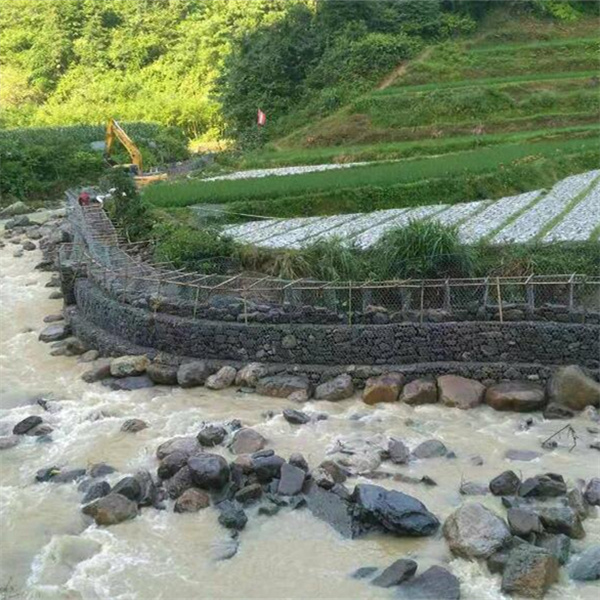ኅዳር . 23, 2024 04:16 Back to list
gabion boxes
The Versatility of Gabion Boxes in Modern Landscaping and Construction
In recent years, gabion boxes have gained significant popularity in landscaping and construction due to their unique design and multifaceted applications. These wire mesh cages, usually filled with rocks, concrete, or other materials, offer a durable and aesthetically pleasing solution for various engineering challenges. This article explores the features, benefits, and applications of gabion boxes, shedding light on why they have become a staple in many outdoor projects.
What Are Gabion Boxes?
Gabion boxes are rectangular containers made from double-twisted wire mesh. They can be filled with different materials such as stones, gravel, and concrete to create a strong, sturdy structure. Traditionally used in civil engineering, gabion boxes are now widely used in landscaping, architecture, and erosion control. They can vary in size and shape, allowing for flexibility in design and application.
Benefits of Gabion Boxes
1. Durability One of the primary advantages of gabion boxes is their robustness. Made from galvanized steel or other corrosion-resistant materials, they can withstand harsh weather conditions and erosion. This makes them ideal for long-term use in outdoor environments.
2. Cost-Effectiveness Compared to traditional building materials, gabion boxes can be more economical. The materials used for filling—such as local rocks or recycled concrete—can often be sourced affordably. Furthermore, their installation requires less labor and time, resulting in reduced operational costs.
3. Eco-Friendliness Gabion boxes present an environmentally friendly option for construction and landscaping. Since they use natural materials, they blend seamlessly into the surrounding environment. They also promote vegetation growth, as soil can be placed within the gaps of the stones, further enhancing biodiversity.
4. Versatility Gabion boxes can serve various purposes, from retaining walls and flood control systems to decorative features in gardens. Their adaptability allows architects and landscapers to incorporate them creatively into different designs.
gabion boxes

5. Erosion Control Due to their weight and solid structure, gabion boxes are highly effective in controlling soil erosion. They can be used along riverbanks or slopes to stabilize the soil and prevent landslides, making them valuable in environmental conservation.
Applications of Gabion Boxes
1. Landscaping In gardens and parks, gabion boxes can be used as decorative elements. They can be transformed into seating areas, raised beds, or fences, providing both functionality and aesthetic appeal. Their natural look also complements various landscaping styles, from rustic to modern.
2. Retaining Walls Gabion boxes are popular for creating retaining walls due to their strength and stability. They can support slopes, prevent soil erosion, and manage water runoff. Unlike traditional retaining walls, gabion walls allow for drainage, reducing the risk of water pressure buildup.
3. Flood Control Many municipalities utilize gabion boxes in flood control schemes. By placing them in strategic areas, they can redirect water flow, protect infrastructure, and mitigate flood damage. Their porous nature allows water to pass through while still stabilizing the soil.
4. Wildlife Habitats By integrating gabion boxes into natural landscapes, we can create habitats for various wildlife species. The gaps between stones can serve as nesting sites, while the overall structure can support vegetation growth, enhancing local ecosystems.
5. Noise Barriers Gabion boxes can also function as noise barriers along highways or in urban areas. Their mass and design help absorb and deflect sound, providing a quieter environment for nearby communities.
Conclusion
Gabion boxes have emerged as an innovative solution in landscaping and construction, offering a blend of functionality, durability, and visual appeal. Their diverse applications and environmental benefits make them an attractive choice for many projects. As we continue to seek sustainable building practices, the popularity of gabion boxes is likely to grow, paving the way for more green, creative, and efficient designs in the future. Whether used for practical purposes like erosion control or decorative features in a garden, gabion boxes prove to be a versatile asset in modern outdoor design.
-
Why PVC Coated Gabion Mattress Is the Best Solution for Long-Term Erosion Control
NewsMay.23,2025
-
Gabion Wire Mesh: The Reinforced Solution for Modern Construction and Landscape Design
NewsMay.23,2025
-
Gabion Wall: The Flexible, Seismic-Resistant Solution for Modern Landscaping and Construction
NewsMay.23,2025
-
Gabion Wall Solutions: The Durable, Decorative, and Affordable Choice for Every Landscape
NewsMay.23,2025
-
Gabion Basket: The Durable and Flexible Alternative to Traditional Retaining Walls
NewsMay.23,2025
-
Gabion Basket: The Proven Solution for Slope Stability and Flood Control
NewsMay.23,2025
-
Versatility of Chain Link Fence Gabion
NewsMay.13,2025






